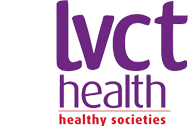The Bi- annual Maisha Conference 2017 organized by National AIDS Control Council (NACC) and its partners, was held between the 28th and 31st May 2017 at the Hilton Hotel in Nairobi. Preceded by a very lively, sprightly and creative day dubbed the “Youth Symposium”, and themed, “Youth na Plan”. It brought together young people from all walks of life and a near full representation from all 47 counties in Kenya.
The entire planning process was young people-driven with an all-young people national planning committee. LVCT Health was represented by two adolescent girls who also volunteered in the program. One of them, an adolescent with disability and the other, a peer-leader in care and treatment program. Other partner organisations supported young people and youth representatives in the national steering committee convened by NACC, which ensured that the process was wholly young people-led.
Kenya HIV estimates 2015, indicates that adolescents and young people aged 15-24 years contributed to 51% of all new HIV infections in Kenya, with girls and young women being disproportionately affected and constituting up to a third of these new infections. Studies have shown that this trend could be reversed by improving knowledge on HIV prevention, care and treatment among this population. According to Dr. Nduku Kilonzo, the CEO, NACC, only 58% of the youth in Kenya have comprehensive correct knowledge on HIV.
This translates to 42% who do not have the ability to correctly identify the two major ways of preventing the sexual transmission of HIV, and reject the most common misconceptions about HIV transmission. By instituting youth- centered communication, we can increase the number of the youth with comprehensive knowledge on HIV.
It was awe inspiring to watch the youth express themselves and run the show and engage policy makers on an array of HIV related issues. It is evident that it is not too late to bring the HIV bus back to the station… Because, this age group holds the future in its hands and this forum can ensure that they catch up.
Among the outstanding issues that arose include; the existing HIV programs do not meet and address the knowledge gaps, and are not reflective of the young peoples‘expectations. With stigma and discrimination being rife in schools, most of the young people living with HIV find it difficult to adhere to their medication thereby increasing chances of morbidity and mortality. Due to lack of youth friendly services, most young people do not seek HIV testing and counselling services. Hence most are unaware of their HIV status. According to the youth, the current condoms and condom dispensers are unappealing hence the low uptake. The youth are asking for youth friendly condoms and dispensers. Youth and young people are also excited about the newly launched HIV self-testing strategy and hope that investment will be made to avail the kits to them.
Sexual and gender based violence – GBV is also a contributing factor to high HIV incidence among young people. It emerged that it is important to challenge the social perceptions of masculinity versus femininity in the society in order to address cases of GBV. Religious organizations should be alert to the fact that young people who are Christians also need access to information and services on HIV prevention. There is need for parents to initiate and engage the youth on sexual and reproductive health SRH, and HIV related issues. Youth Advisory Council Members supported by LVCT Health, were involved in the County plenary discussions. These discussions, focused on the current situation and looked at various ways of HIV prevention among young people in different counties in Kenya, and workable interventions.
This youth- centered communication is should put into consideration the youths’ needs and values, listen and incorporate their decisions, and build stronger relationships between the youth, policy makers and all stakeholders in the HIV realm. This communication style has been linked to greater satisfaction, treatment adherence, and quality of life. Young people want inclusivity for decision making on HIV programming matters. It is imperative that the young people are at the fore and lead the way on how to realize an AIDS free generation. Part of the greatest challenge, is that adults have been developing what they imagine is useful for the youth. Statistics indicate, this has clearly not worked and the strategy needs to be changed.
Existing youth-friendly opportunities that were pointed out were; use of peers for mobilization, representation in committees that develop health messages targeted at the youth, representation in high level policy making meetings, and empowerment with knowledge and skills on HIV and SRH. This will make the information more appropriate and fit for them.
Benefits of Youth Involvement:
- Better health-promoting behaviour
- Informed decision making about health
- Make sense of complex medical information
- Deal with uncertainties
By Lynda Keeru, Felix Murira
